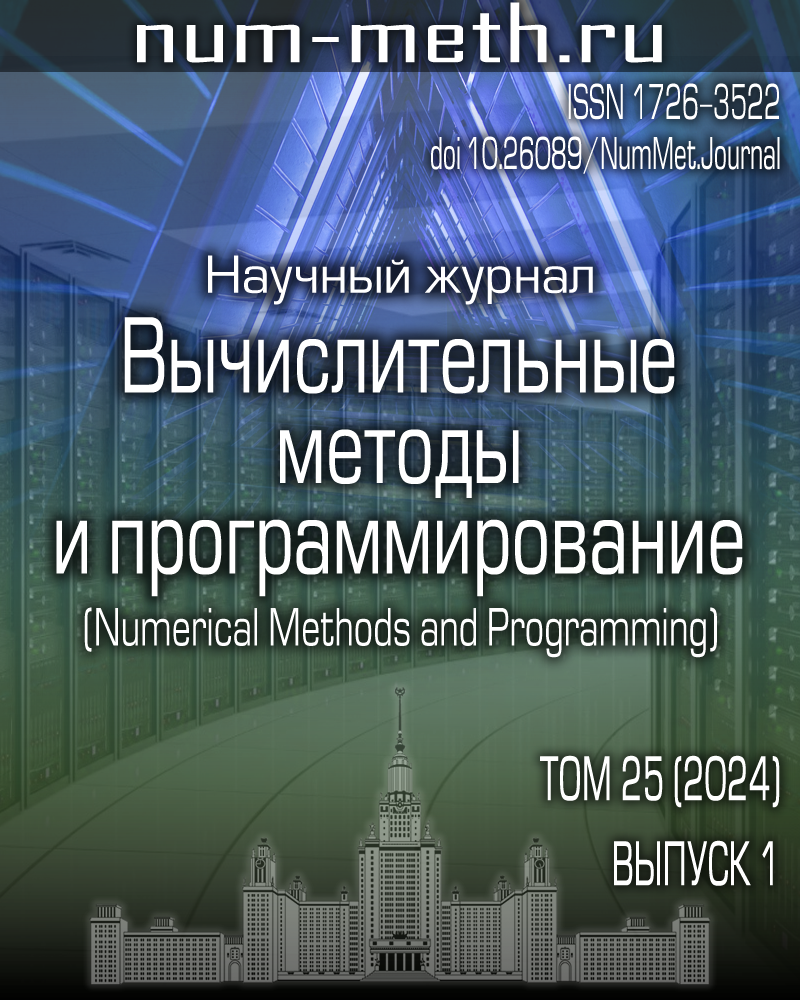|
|
Numerical methods and programming, 2014, Volume 15, Issue 1, Pages 9–21
(Mi vmp226)
|
 |
|
 |
Application of the multicharge approximation for large dense matrices in the framework of the polarized continuum solvent model
A. Yu. Mikhaleva, I. V. Oferkinb, I. V. Oseledetsc, A. V. Sulimovb, E. E. Tyrtyshnikovc, V. B. Sulimovd
a M. V. Lomonosov Moscow State University, Faculty of Computational Mathematics and Cybernetics
b Dimonta Company, Moscow
c Institute of Numerical Mathematics, Russian Academy of Sciences, Moscow
d M.V. Lomonosov Moscow State University, Research Computing Center
Abstract:
The polar part of the molecular interaction energy with a water solvent and its computation are considered in the frame of the PCM continuum implicit solvent model (Polarized Continuum Model). A new algorithm of solving the polarized charge equation is proposed. This algorithm is more than two orders of magnitude faster than the regular iterative methods without any critical loss of accuracy. The algorithm is based on the multicharge method for approximating large dense matrices generated by discretizing the molecular Solvent Excluded Surface (SES) and the polarized charges on it. The algorithm is implemented in the MCBHSOLV program written on the Python programming language. Numerical results obtained with the MCBHSOLV program and its performance are compared with those of the DISOLV program. The comparison is based on computing the polar part of the solvation energy of different proteins, ligands, and protein-ligand complexes as well as on computing the desolvation energy being an important part of the protein-ligand interaction energy. Both the programs used the same test data: molecules, surfaces, discretizations, and atomic charges. The influence of the discretization step size on the molecule solvation and desolvation energies is examined. It is shown that the computations of the desolvation energy with an error less than $1$ kcal/mol can be performed with a discretization step of $0.2$ A, which requires only several minutes per one set of protein, ligand, and protein-ligand complexes.
Keywords:
implicit solvent model, polarized charges, triangulation network, molecular surface, Solvent Excluded Surface (SES), solvation energy, desolvation energy, protein-ligand binding energy, solvent, multicharge method.
Received: 09.12.2013
Citation:
A. Yu. Mikhalev, I. V. Oferkin, I. V. Oseledets, A. V. Sulimov, E. E. Tyrtyshnikov, V. B. Sulimov, “Application of the multicharge approximation for large dense matrices in the framework of the polarized continuum solvent model”, Num. Meth. Prog., 15:1 (2014), 9–21
Linking options:
https://www.mathnet.ru/eng/vmp226 https://www.mathnet.ru/eng/vmp/v15/i1/p9
|

|




 Contact us:
Contact us: Terms of Use
Terms of Use
 Registration to the website
Registration to the website Logotypes
Logotypes








 Citation in format
Citation in format 